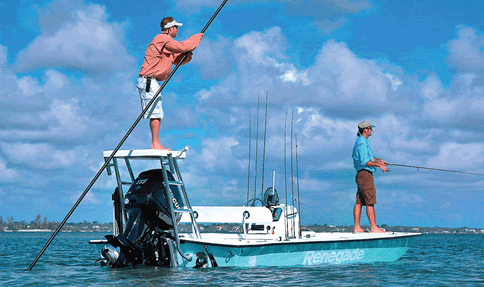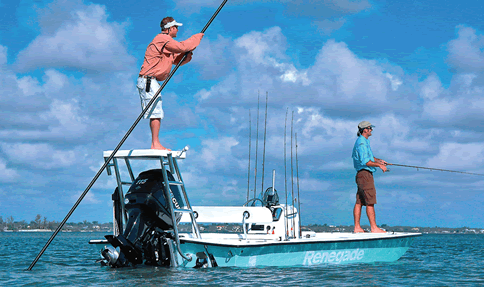Tech
How GPS Technology Saved My Fishing Trip

Why I now always carry my Garmin 650t when hiking to new fishing spots!
Back in college, a buddy of mine recommended a great “secret” fishing spot; he said it was a little peninsula a few miles away from our town, but you had to walk about 2 hours to get to it (he had to cross a mangrove swamp). But it was worth it- nobody else had known about it, and there were monster fish just waiting to be caught! Well, that was according to him- but he did claim to have caught a 30 pound grouper the week before. I decided to give it a try (I was also hoping to try a new onion-garlic sauté recipe) so the following weekend, I packed my best gear (50-pound test monofilament line, but it was probably overkill), and headed out before the sun was up.

Now my buddy from college was not the best when it came to giving directions; it did not help that I had a terrible sense of direction either; after a couple of hours I realized I was lost! Of course I had my cellphone with me, and luckily I was able to call the local authorities and they found me sometime near 3pm. Of course the fishing “adventure” had come to an end, and I was badly sunburnt and had fed probably a million mosquitoes- I would not be doing this kind of thing anytime soon. So what’s the moral of the story? Always bring a GPS and a good map.
Of course, this is just one of my many mishaps that happened during fishing trips – I’ve had so many scars (i once tore my ear nearly in half, but that’s another story), looking back I wish I was more careful- I could have saved myself from a lot of pain. For first time anglers, safety should be a priority! Here are some safety tips you should remember when going fishing:
• Learn how to swim. – This is the most BASIC rule of fishing. You are working around water- and no matter how careful you are, at some point in your life you will slip and fall.
• Life vests – also known as PFD (personal floatation devices) can and will save your life. Even if you know how to swim, this can still greatly improve your chances of survival should anything happen to you. And don’t think this should be used only on boats- anywhere with fast-moving or deep water, don’t forget your PFDs!
• Have a “buddy” – having someone beside you can ensure that no matter what happens, you will never be left alone to fend for yourself. And in case you do find yourself going on a trip alone, always let others know where you are going, and for how long. Have you seen the movie 127 hours?
• REACH-THROW-ROW-GO – this is the basic guidelines for rescuing someone who has fallen into the water. Reach out- this is the first thing you do, if a person is within reach. if not, Throw – a lifesaver or any other PFD. If you have none with you (what happened to rule 2?), Row out – on a boat; remember to shut off the engine before attempting any rescue. Go yourself only as a last resort- this is very dangerous, because a drowning person could easily pull the rescuer with him. Ideally do this if you have lifeguard experience.
• Equipment- handle your equipment with CARE. Always check behind you before you cast, to avoid snagging trees, power lines, people (this happened to my ear once; it is NOT a pretty sight). Don’t leave your tackle around; someone could easily trip on it and get injured, or even break your equipment. And always use pliers when extracting the hook from the fish – this will prevent many nasty injuries (trust me on this one).
Those being said, as long as you keep safety in mind, never forget to enjoy fishing! This is probably one of life’s greatest pleasures – don’t let little accidents ruin your fun.
Author Chris Weber is a true die hard fisherman that never leaves home with the correct equipment as far as technology and survival.
-

 Tech11 years ago
Tech11 years agoCreating An e-Commerce Website
-

 Tech11 years ago
Tech11 years agoDesign Template Guidelines For Mobile Apps
-

 Business6 years ago
Business6 years agoWhat Is AdsSupply? A Comprehensive Review
-

 Business10 years ago
Business10 years agoThe Key Types Of Brochure Printing Services
-

 Tech8 years ago
Tech8 years agoWhen To Send Your Bulk Messages?
-

 Tech5 years ago
Tech5 years ago5 Link Building Strategies You Can Apply For Local SEO
-

 Law5 years ago
Law5 years agoHow Can A Divorce Lawyer Help You Get Through Divorce?
-

 Home Improvement6 years ago
Home Improvement6 years agoHоw tо Kеер Antѕ Out оf Yоur Kitсhеn































